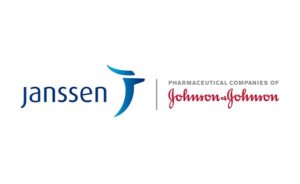
The Janssen Pharmaceutical Companies of Johnson & Johnson has announced the publication of new real-world evidence which confirms that XARELTO (rivaroxaban) reduces the risk of recurrent venous thromboembolism (VTE) in patients who are morbidly obese, with effectiveness and safety similar to that of warfarin.
Notably, patients taking XARELTO had significantly reduced healthcare resource utilisation (HRU) and total medical costs compared to those taking warfarin. Results of this study were published in Thrombosis Research.
Approximately 40% of the US population have obesity and about 8% have morbid obesity. Obesity increases the risk of VTE by two to six times, compared with non-obese patients. Typically, morbidly obese patients are treated with older anticoagulants, such as warfarin, and require more laboratory monitoring than patients of a normal weight. In addition, morbidly obese patients are often underrepresented in Phase 3 studies.
“This is the first large-scale, real-world study to evaluate a direct oral anticoagulant (DOAC) in morbidly obese patients with VTE, and the first to identify healthcare resource utilization and medical costs in this population,” said Alex C Spyropoulos, professor of Medicine at The Donald and Barbara Zucker School of Medicine, Hofstra University, New York, USA.
He added: “We now know from this research that rivaroxaban is as effective and safe as dose-adjusted warfarin when treating morbidly obese patients, without the need for routine anti-Xa measurements, and with significantly lower healthcare resource utilization. Physicians should feel confident in prescribing rivaroxaban for managing VTE in this population.”
In 2016, the International Society on Thrombosis and Haemostasis (ISTH) published a guidance statement recommending against DOAC use in morbidly obese patients. This recommendation was based on limited clinical data and concerns about available pharmacokinetic/pharmacodynamic (PK/PD) evidence from another DOAC that suggested a decrease in drug levels with increased body weight. Published data for XARELTO, however, found that the medicine’s PK/PD were not meaningfully influenced by body weight.
“Obesity affects millions of Americans and is a significant risk factor for VTE and NVAF,” said Paul Burton, vice president, Medical Affairs, Internal Medicine, Janssen Scientific Affairs. “These real-world studies, coupled with the consistent PK/PD and clinical data for XARELTO in obese patients with VTE or NVAF, underpin the broad clinical utility of XARELTO and provide clinicians with the evidence to consider an alternative option to warfarin.”
More than 5,000 morbidly obese patients (those who had a body mass index [BMI] of ≥40) were included in the study, with half receiving XARELTO and half receiving warfarin. There were 2,890 matched pairs in the intent-to-treat (ITT) analysis and 2,832 pairs in the on-treatment analysis. The following observations for the ITT analysis were made:
- Recurrent VTE: The risk of recurrent VTE was not significantly different between XARELTO and warfarin (16.8% vs. 15.9%; Odds Ratio [OR]: 0.99; 95% confidence interval [CI]: 0.85 to 1.14; p=0.8443).
- Major Bleeding: The study found significantly fewer major bleeding events for those taking XARELTO® compared to those taking warfarin (1.8% vs. 2.5%; OR: 0.66; 95% CI: 0.45 to 0.98; p=0.0388).
- HRU: XARELTO was associated with significantly lower HRU compared to treatment with warfarin. Specifically, hospitalizations occurred in 35.1% and 38.6%, respectively (OR: 0.86; 95 percent CI: 0.77 to 0.96; p=0.0057). XARELTO patients, on average, had 19 fewer per patient per year (PPPY) outpatient visits, including laboratory encounters, compared to warfarin-treated patients (93 vs. 112 encounters; p<0.0001).
- Medical Costs: XARELTO treatment yielded significantly less HRU and total medical costs (hospitalisations, emergency room, outpatient and office visits, skilled nursing facility/long-term care), with similar total healthcare costs (including total medical costs and pharmacy costs) between groups. Average total medical costs PPPY were $2,829 lower with XARELTO compared to warfarin ($34,824 vs. $37,653; p=0.0201), which were mainly driven by hospitalisation costs.
Furthermore, the on-treatment analysis found no significant differences for recurrent VTE and major bleeding between XARELTO and warfarin, with significantly lower HRU and total medical costs associated with XARELTO.
The results of this VTE study are consistent with data across body weights from the EINSTEIN DVT and EINSTEIN PE randomized clinical trials, which were the Phase 3 registration trials for XARELTO in VTE (deep vein thrombosis or DVT, and pulmonary embolism or PE).
Additionally, this real-world VTE study complements the only other large-scale, real-world study of over 7,000 patients with NVAF and morbid obesity where consistent effectiveness, safety and reduction in healthcare and total medical costs with XARELTO were shown. The safety and effectiveness align with what was observed in ROCKET AF, the Phase 3 registration trial for XARELTO in NVAF.












